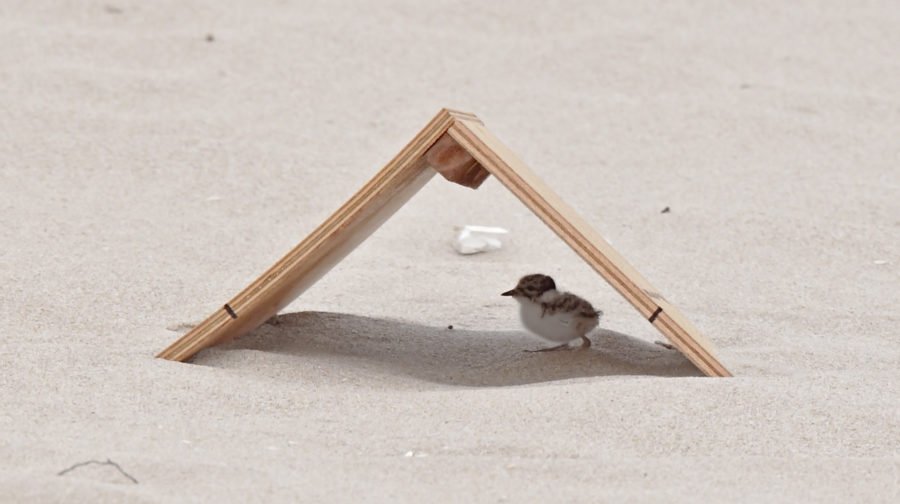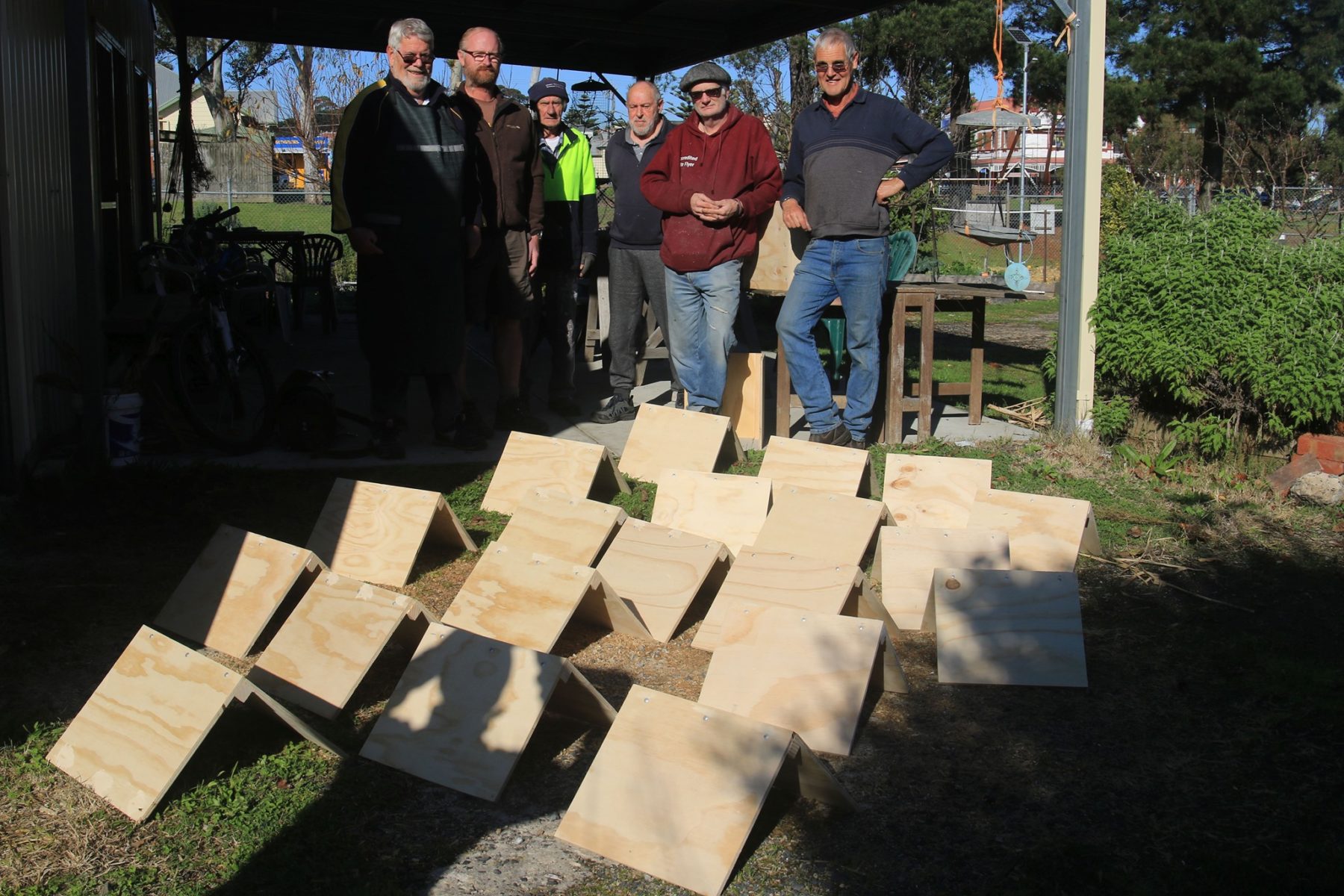‘Homes for Hoodies’ saving beach-nesting birds

These shelters, also known as ‘homes for hoodies’, are giving hooded plovers a fighting chance against extinction.
The easy to build A-frame wooden structures have been shown to increase the fledgling rates of the threatened bird by up to 71 per cent.
Birdlife Australia’s Dr Grainne Maguire, who has worked on the recovery of hooded plovers for 15 years and was the lead author of the 2011 paper proving the success of the A-frame shelters, remembers the first time they were used.
“We were so amazed. Initially, we trialled the shelters on their own, exploring the thermal benefits of different designs and also whether predators were curious about them,” Grainne says. “Once we were confident that wasn’t a risk we used them with the birds, and the very first time we put them out, we retreated to a safe observation distance and on the first instance of beach user disturbance to the birds, the chicks ran to the shelters to take refuge.”
Because the birds nest on beaches, the eggs as well as the chicks are put in danger by unsuspecting beachgoers, who trample them, and predators, including dogs, foxes and larger birds such as ravens looking to prey on them.
“Once the chicks hatch, they need to feed on the beaches but when a danger approaches, they run rapidly to the nearest dune vegetation. That’s a big distance on beaches that are very wide,” Grainne explains. “Sometimes there’s not a lot of cover for them to hide beneath. We thought if we could add artificial shelter, and place this on the beach itself, closer to feeding areas, they won’t have to run those long distances all the time and lose all that energy.”
In preparation for the August‒March breeding season, volunteers from the Wonthaggi Men’s Shed built and donated over 50 wooden shelters for breeding sites along the Bass Coast of Victoria following what BirdLife described as “the worst breeding season on record” – only five chicks fledged successfully out of the 34 known breeding pairs in the area.

“Part of the reason the birds on the Bass Coast struggled was because of the influx of new ‘local’ tourists. We can’t travel overseas or interstate as much due to the pandemic, so we’re exploring our local coastline more and more, with lesser known Gippsland beaches now receiving thousands of visitors,” Grainne says.
“Places like the Mornington Peninsula and the Surf Coast have traditionally had huge numbers of tourists and so we’ve worked tirelessly to educate, patrol and adapt our protection methods for the birds. However, on the Bass Coast we weren’t prepared for these huge numbers and unfortunately, neither were the birds.”
The breeding sites along the Bass Coast are among a small number of strongholds for Victoria’s threatened hooded plover population. Grainne remains hopeful for the species.
“I admire their resilience. These birds can nest up to eight times in one season and they go through so much failure but they just keep going.”
But Grainne says public awareness will be key to their survival.
“I hope we get to the point as a society where we go to the beach and we know there might be nesting birds there so we can give them their space and leash our dogs. When that becomes the new ‘normal’, the birds can do well even if we’re still using the beaches.”

